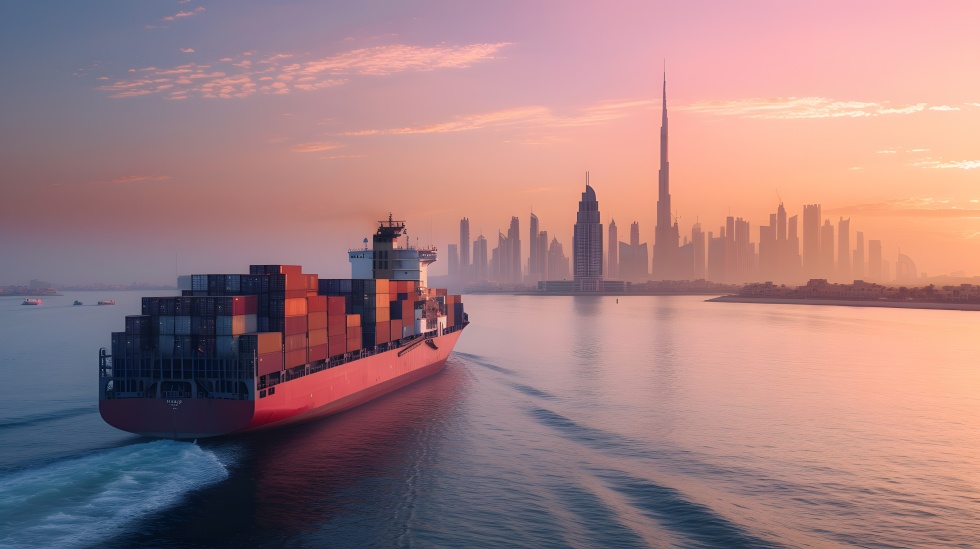Unlocking Global Opportunities: Navigating the Belt and Road Initiative
Explore the transformative impact of the Belt and Road Initiative on global trade routes and discover strategic opportunities for businesses worldwide.

China's ambitious Belt and Road Initiative (BRI), also known as the New Silk Road Trade, is reshaping the dynamics of global trade. Launched in 2013, the project initially aimed to connect East Asia and Europe through physical infrastructure, but has since expanded its reach to Africa, Oceania, and Latin America. This article delves into the various aspects of the BRI, exploring the trade routes and the opportunities it presents for businesses around the world.
What is the Belt and Road Initiative?
Conceived by President Xi Jinping, the BRI spans continents and includes a variety of development and investment initiatives. It aims to create a vast network of railways, energy pipelines, highways, and streamlined border crossings. The initiative includes both the overland Silk Road Economic Belt and the Maritime Silk Road trade, collectively known as the Belt and Road Initiative.
Trade Routes under the Belt and Road Initiative
The BRI establishes major land and maritime trade routes and promotes international connectivity. The initiative promotes economic cooperation by investing in port development, enhancing trade, and facilitating economic growth along the Indian Ocean, from Southeast Asia to East Africa and parts of Europe.
- The Silk Road Economic Belt: This route spans the Eurasian landmass, connecting China with Europe through Central Asia and the Middle East. It includes major overland trade corridors that facilitate the movement of goods and promote economic cooperation.
- Maritime Silk Road trade: Focused on maritime trade, this route improves connectivity along the Indian Ocean, linking Southeast Asia, South Asia, Africa, and Europe. It includes major port development projects to accommodate increased trade traffic.
- Digital Silk Road trade: Complementing traditional trade routes, the Digital Silk Road emphasizes technological connectivity. It includes investments in telecommunications, 5G networks, and digital infrastructure to facilitate the seamless flow of information.
Statistics:
- The Belt and Road Initiative involves 147 countries, accounting for two-thirds of the world's population.
- China has spent an estimated $1 trillion on BRI projects to date.
- The estimated cost of the China-Pakistan Economic Corridor (CPEC), one of the largest BRI projects, is $62 billion.
Economic and Business Opportunities
As the BRI unfolds, it significantly impacts global trade patterns, offering substantial opportunities for businesses along its routes.
- Job Creation through Special Economic Zones: The BRI promotes the establishment of special economic zones, creating employment opportunities and fostering economic growth in participating regions.
- Technological Advancements: Businesses can capitalize on the technological initiatives under the BRI, contributing to advancements in areas such as telecommunications, artificial intelligence, and digital infrastructure.
- International Collaboration: The initiative encourages collaboration between businesses and countries, providing a platform for joint ventures, partnerships, and cross-border investments.
Statistics:
- Over two-thirds of European Union (EU) member countries have formally signed on to BRI.
- Japan has committed over $300 billion in public and private financing to infrastructure projects throughout Asia.
Challenges and Considerations
While the BRI presents immense opportunities, it also faces geopolitical challenges and requires careful consideration of infrastructure and logistical aspects. Businesses engaging in BRI projects need to navigate potential risks and uncertainties in different regions.
- Geopolitical Challenges: The BRI faces geopolitical scrutiny, with concerns about China's influence and potential debt-related issues in participating countries.
- Infrastructure and Logistical Considerations: Businesses need to navigate diverse infrastructural landscapes and logistical challenges in different regions covered by the BRI, requiring careful planning and risk assessment.
- Sustainability Concerns: While the BRI emphasizes sustainability, challenges related to environmental impact and social considerations need to be addressed for responsible and ethical business practices.

Role of Technology in the Belt and Road Initiative
The BRI places a significant emphasis on leveraging technology for economic development. The Digital Silk Road, a key component, involves investments in:
- Telecommunications infrastructure
- 5G networks
- Digital connectivity projects
This technological focus aims to enhance connectivity, facilitate data exchange, and drive innovation along the BRI routes.
Environmental and Social Impacts
The BRI emphasizes sustainability initiatives, considering environmental and social impacts. Understanding these aspects is essential for businesses looking to align with the initiative's goals while maintaining responsible practices.
- Sustainability Initiatives: The BRI incorporates sustainability initiatives, addressing environmental concerns through projects that promote green development and eco-friendly practices.
- Social Development: Beyond economic goals, the BRI aims to contribute to social development by creating jobs, improving livelihoods, and fostering cultural exchange among participating nations.
Conclusion
The Belt and Road Initiative presents a transformative landscape for global trade. Businesses keen on participating in the Silk Road trade and exploring opportunities for Vietnam import-export activities can find a wealth of prospects within the BRI. Navigating these routes requires strategic planning, adaptability, and a keen understanding of the diverse markets involved. As the BRI continues to shape the future of international trade, businesses are encouraged to explore the possibilities it offers for growth and collaboration.
Connect with global partners seamlessly on Export Portal, your gateway to a world of trade possibilities. Join us and elevate your business to new heights!






Comments 0